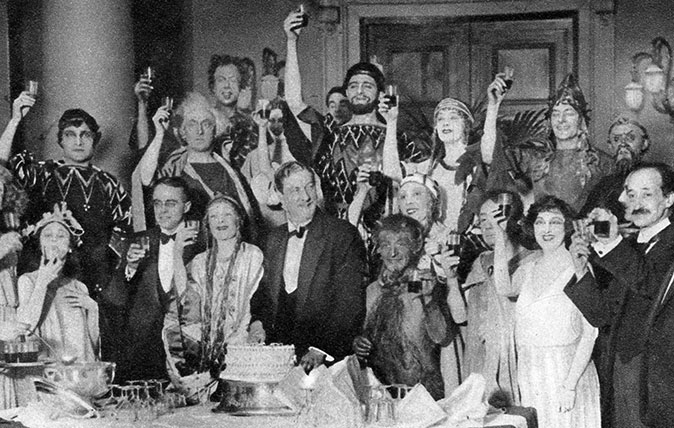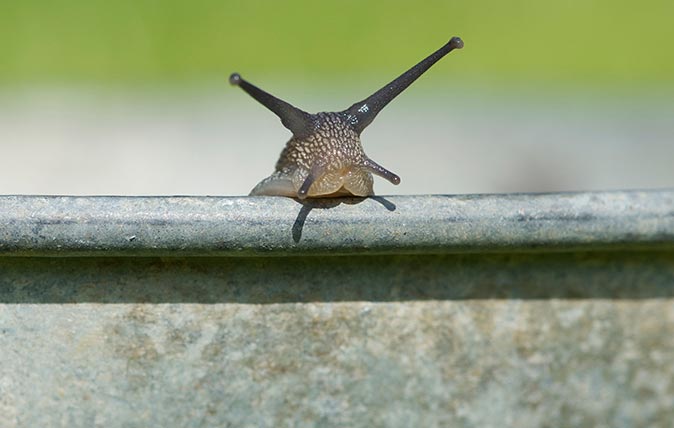Curious Questions: Why is the Green Room called the Green Room?
Whether you're performing a play or about to go on television, the waiting room is called the Green Room – but why is that? Martin Fone, author of 'Fifty Curious Questions', investigates.


Recently I have been fortunate enough to wander around a number of radio studios, promoting my latest book, Fifty Scams and Hoaxes. Being a neophyte in the world of broadcasting, I imagined I would be entertained lavishly in the Green Room before being invited to interest the British listening public on the merits of my book.
Perhaps indicative of my lowly status in the celeb stakes, it hasn't really happened that way. The spaces where I waited before being interviewed have not been green, and in may cases have barely qualified as a room. It set me thinking, though; why is a Green Room so called, and do they really exist?
The latter question is probably the easier to answer. Lack of space has seen the disappearance of specific communal holding or waiting areas for thespians in all but a few theatres, though they still exist in television studios – areas often for guests to relax and compose themselves before and after their grilling.
The origin of the term, however, is more problematic.
In the 16th century, actors would wait to go on stage in what was known as a 'tiring house', probably so named because it was here that they put on their costumes or were attired. Peter Quince, in Shakespeare’s A Midsummer Night’s Dream, Act 3.1, explains all:
Pat, pat; and here's a marvellous convenient place for our rehearsal. This green plot shall be our stage, this hawthorn-brake our tiring-house; and we will do it in action as we will do it before the duke.
Quince’s tiring house may have been fictional but the Theatre Royal in Drury Lane certainly had one by the time Samuel Pepys went back stage to visit Nell Gwynn in 1667. 'She took us up into the Tireing-rooms and to the women’s shift, where Nell was dressing herself.'

Pepys provides us with an early reference to a green room but this was where petitioners for money – in Pepys' case, for the navy on October 7th 1666 – were summoned to see the King. By 1667, though, the green room had been abandoned as a venue for clandestine negotiations, the Earl of Lauderdale noting in a letter, 'now we have no green roome, all is fairely treated in Councell.' It may well be that the colour of the décor gave this room its name.
Exquisite houses, the beauty of Nature, and how to get the most from your life, straight to your inbox.
The first specific reference to a green room in a theatrical context is to be found in A True Widow, a play written by Thomas Shadwell and published in 1678. One of the characters, Stanmore, declares, 'Selfish, this Evening, in a green Room, behind the Scenes, was before-hand with me…'. A few years late in 1697 in The Female Wit – a play written with no attribution – the character of Praiseall tells the assembled troupe of actresses, 'I’ll treat you all in the Green Room, with Chocolate.'
Colley Cibber, an actor and playwright, closely associated with the Theatre Royal in Drury Lane, referred to the lay-out of the theatre in a passage from Love Makes Man, published in 1701; 'I do know London pretty well, and the Side-box, Sir, and behind the Scenes; ay, and the Green-Room, and all the Girls and Women Actresses there.'
But why green?
There appears to be no definitive answer, but lots of theories – some of which are more convincing than others. 'Greengage' is Cockney rhyming slang for a stage and so, perhaps, green is an abbreviation. Scene rooms were where scenery was stored, and possibly green is a corruption of that name. It might also have a different, equally practical route: green is said to be a calming colour and therefore ideal for soothing the nerves of apprehensive thespians.
Perhaps more plausibly, some theatres used curtains made of heavy, green baize to separate the stage from the rear. As a consequence, a green costume was deemed to be unlucky because it blended into the background and theatrical types used the phrase 'behind the green' to denote the backstage area.
We'll never be certain; you pays your money and you takes your choice. But personally? I like the idea that its origin comes from the colour of the actors’ resting room in one of the country’s principal theatres, the Theatre Royal – with, perhaps, a nod to the King’s private reception room.
Martin Fone is author of 'Fifty Curious Questions' – his new book, 50 Scams and Hoaxes, is out now.

Credit: Rex
Curious Questions: Why do we still use the QWERTY keyboard?
The strange layout of keyboards in the Anglophone world is as bafflingly illogical. Martin Fone, author of 'Fifty Curious Questions',

Curious Questions: Why do the British drive on the left?
The rest of Europe drives on the right, so why do the British drive on the left? Martin Fone, author

Curious Questions: Why do actors say ‘break a leg’?
The best-known phrase for wishing an actor luck is also the most baffling. Martin Fone, author of 'Fifty Curious Questions',

Credit: Alamy
Curious Questions: Does throwing a snail stop it from returning to your garden?
The oldest gardeners' remedy for getting rid of snails is also the simplest: throw them as far away as you
After graduating in Classics from Trinity College Cambridge and a 38 year career in the financial services sector in the City of London, Martin Fone started blogging and writing on a freelance basis as he slipped into retirement. He has developed a fearless passion for investigating the quirks and oddities of life and discovering the answers to questions most of us never even think to ask. A voracious reader, a keen but distinctly amateur gardener, and a gin enthusiast, Martin lives with his wife in Surrey. He has written five books, the latest of which is More Curious Questions.
